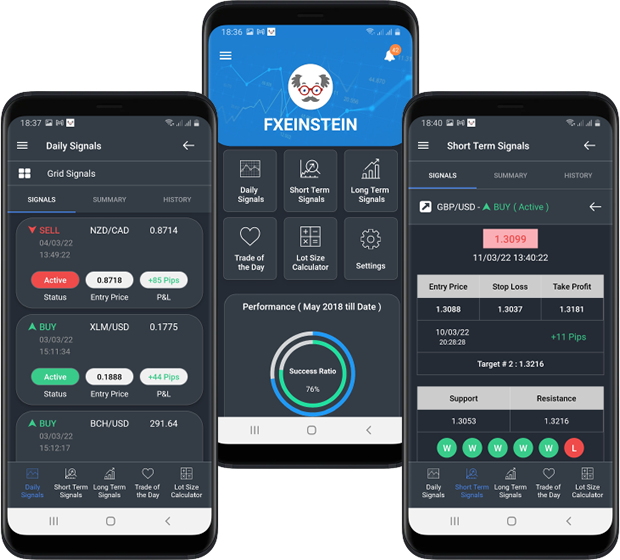
You're probably curious about high yield bonds and what you should look out for. High yield bonds are not for everyone. We'll be discussing Interest rates, Credit ratings and other common characteristics. Let's first look at the characteristics common to high yield bonds before we get into details. Continue reading for helpful tips if you are still unclear.
Interest rates
High yield refers to a bond's higher yield. High yield bonds have a shorter maturity period (usually around 10 year) and are generally calledable. This means that an issuer may decide to repurchase the bond later. They are more volatile than most other types bonds. Their prices react more strongly and more strongly to economic or corporate earnings developments than to day-to-day fluctuations in the interest rate. High yield bonds are more likely to outperform other forms of fixed income, so investors might be more interested in them.
High yield bonds carry a greater risk than investment-grade bonds due to their higher yield. Due to their lower credit quality, they are more susceptible to default which causes the price of high yield bonds to fall. Because of this, they pay higher interest rates. High-yield bonds tend to be issued by startups, small and capital-intensive companies, and some are even "fallen angels," which means they have a poor credit rating. High-yield bonds have risks, which investors should not underestimate.

Ratings of credit
It is not a simple cycle. While rising stars have been drawing attention, it is important that you keep an eye on market trends. Rising stars are being noticed for their ability to indicate future price support. Unfortunately, they are also becoming more expensive than previous generations. The market cycle is influenced by credit ratings. Rising stars also indicate a higher quality product than it was previously.
High yield bonds aren't rated high-quality investments. Their credit rating is often lower than the credit ratings of investment-grade bonds, and they are not an appropriate choice for most investors. The rating agency's credit rating is not permanent. It can change with the performance and financial condition of the issuer. This can cause high yield bonds to become investment-grade, or junk, and could result in them becoming less attractive. To avoid such risks, investors should only make investments in high-quality bonds.
Common features
High yield bonds are unsecured obligations with a higher default risk. High yield bonds are less restrictive than investment grade bonds and can be more flexible than bank loan loans. They are often updated during marketing. NerdWallet takes more than 15 factors into consideration when scoring high yield bonds. Here are some characteristics that high yield bonds share. If you are interested in investing in high yield debt, please read the introduction.
High yield bonds can generate equity-like returns but also come with speculative risk. High yield bonds have a low correlation with equities and investment-grade bonds. Before investing in this type, investors need to consider the potential risks. This type of bond offers higher yields that treasuries.

Investing in high-yield bonds
High yield bonds might appeal to those who are looking for higher returns on their investments. But you should be aware that high yield bonds carry risks. High yield bonds can be risky investments. It is recommended to seek advice from a financial adviser before you invest in them. Before investing in high yield bonds, there are many factors you should consider, such as your risk tolerance, time frame, and current asset allocation.
High-yield bonds tend to move in the same direction as stocks, and they may not diversify a stock-heavy portfolio. They are also less liquid than investment grade bonds. Additionally, high-yield bonds are more likely to suffer from downgrades by credit rating agencies, which can hurt the value of the bond. It's important to do thorough research on potential investments. An advisor can provide guidance.
FAQ
What is a Stock Exchange?
A stock exchange is where companies go to sell shares of their company. This allows investors to buy into the company. The market sets the price of the share. It is typically determined by the willingness of people to pay for the shares.
Investors can also make money by investing in the stock exchange. Investors give money to help companies grow. This is done by purchasing shares in the company. Companies use their money in order to finance their projects and grow their business.
There can be many types of shares on a stock market. Some shares are known as ordinary shares. These shares are the most widely traded. Ordinary shares are bought and sold in the open market. Prices for shares are determined by supply/demand.
Preferred shares and bonds are two types of shares. When dividends are paid, preferred shares have priority over all other shares. The bonds issued by the company are called debt securities and must be repaid.
What are the benefits to owning stocks
Stocks are less volatile than bonds. Stocks will lose a lot of value if a company goes bankrupt.
But, shares will increase if the company grows.
For capital raising, companies will often issue new shares. This allows investors to buy more shares in the company.
Companies borrow money using debt finance. This allows them to borrow money cheaply, which allows them more growth.
People will purchase a product that is good if it's a quality product. As demand increases, so does the price of the stock.
As long as the company continues producing products that people love, the stock price should not fall.
What is the distinction between marketable and not-marketable securities
Non-marketable securities are less liquid, have lower trading volumes and incur higher transaction costs. Marketable securities are traded on exchanges, and have higher liquidity and trading volumes. You also get better price discovery since they trade all the time. This rule is not perfect. There are however many exceptions. Some mutual funds, for example, are restricted to institutional investors only and cannot trade on the public markets.
Marketable securities are more risky than non-marketable securities. They have lower yields and need higher initial capital deposits. Marketable securities are typically safer and easier to handle than nonmarketable ones.
A large corporation bond has a greater chance of being paid back than a smaller bond. This is because the former may have a strong balance sheet, while the latter might not.
Because they can make higher portfolio returns, investment companies prefer to hold marketable securities.
Who can trade in stock markets?
Everyone. There are many differences in the world. Some people have more knowledge and skills than others. They should be rewarded.
Other factors also play a role in whether or not someone is successful at trading stocks. For example, if you don't know how to read financial reports, you won't be able to make any decisions based on them.
You need to know how to read these reports. Each number must be understood. Also, you need to understand the meaning of each number.
You will be able spot trends and patterns within the data. This will help to determine when you should buy or sell shares.
And if you're lucky enough, you might become rich from doing this.
What is the working of the stock market?
You are purchasing ownership rights to a portion of the company when you purchase a share of stock. A shareholder has certain rights. He/she may vote on major policies or resolutions. He/she can demand compensation for damages caused by the company. He/she can also sue the firm for breach of contract.
A company cannot issue shares that are greater than its total assets minus its liabilities. This is called "capital adequacy."
Companies with high capital adequacy rates are considered safe. Companies with low ratios of capital adequacy are more risky.
How are share prices set?
Investors who seek a return for their investments set the share price. They want to make profits from the company. So they buy shares at a certain price. Investors will earn more if the share prices rise. If the share price falls, then the investor loses money.
An investor's primary goal is to make money. This is why they invest into companies. They are able to make lots of cash.
What is a REIT and what are its benefits?
An entity called a real estate investment trust (REIT), is one that holds income-producing properties like apartment buildings, shopping centers and office buildings. These publicly traded companies pay dividends rather than paying corporate taxes.
They are similar to a corporation, except that they only own property rather than manufacturing goods.
Statistics
- US resident who opens a new IBKR Pro individual or joint account receives a 0.25% rate reduction on margin loans. (nerdwallet.com)
- Ratchet down that 10% if you don't yet have a healthy emergency fund and 10% to 15% of your income funneled into a retirement savings account. (nerdwallet.com)
- "If all of your money's in one stock, you could potentially lose 50% of it overnight," Moore says. (nerdwallet.com)
- Individuals with very limited financial experience are either terrified by horror stories of average investors losing 50% of their portfolio value or are beguiled by "hot tips" that bear the promise of huge rewards but seldom pay off. (investopedia.com)
External Links
How To
How to Trade Stock Markets
Stock trading involves the purchase and sale of stocks, bonds, commodities or currencies as well as derivatives. Trading is French for "trading", which means someone who buys or sells. Traders purchase and sell securities in order make money from the difference between what is paid and what they get. It is one of the oldest forms of financial investment.
There are many ways to invest in the stock market. There are three basic types: active, passive and hybrid. Passive investors watch their investments grow, while actively traded investors look for winning companies to make a profit. Hybrid investor combine these two approaches.
Passive investing involves index funds that track broad indicators such as the Dow Jones Industrial Average and S&P 500. This type of investing is very popular as it allows you the opportunity to reap the benefits and not have to worry about the risks. Just sit back and allow your investments to work for you.
Active investing is the act of picking companies to invest in and then analyzing their performance. Active investors will look at things such as earnings growth, return on equity, debt ratios, P/E ratio, cash flow, book value, dividend payout, management team, share price history, etc. They will then decide whether or no to buy shares in the company. If they believe that the company has a low value, they will invest in shares to increase the price. On the other hand, if they think the company is overvalued, they will wait until the price drops before purchasing the stock.
Hybrid investing combines some aspects of both passive and active investing. You might choose a fund that tracks multiple stocks but also wish to pick several companies. In this case, you would put part of your portfolio into a passively managed fund and another part into a collection of actively managed funds.